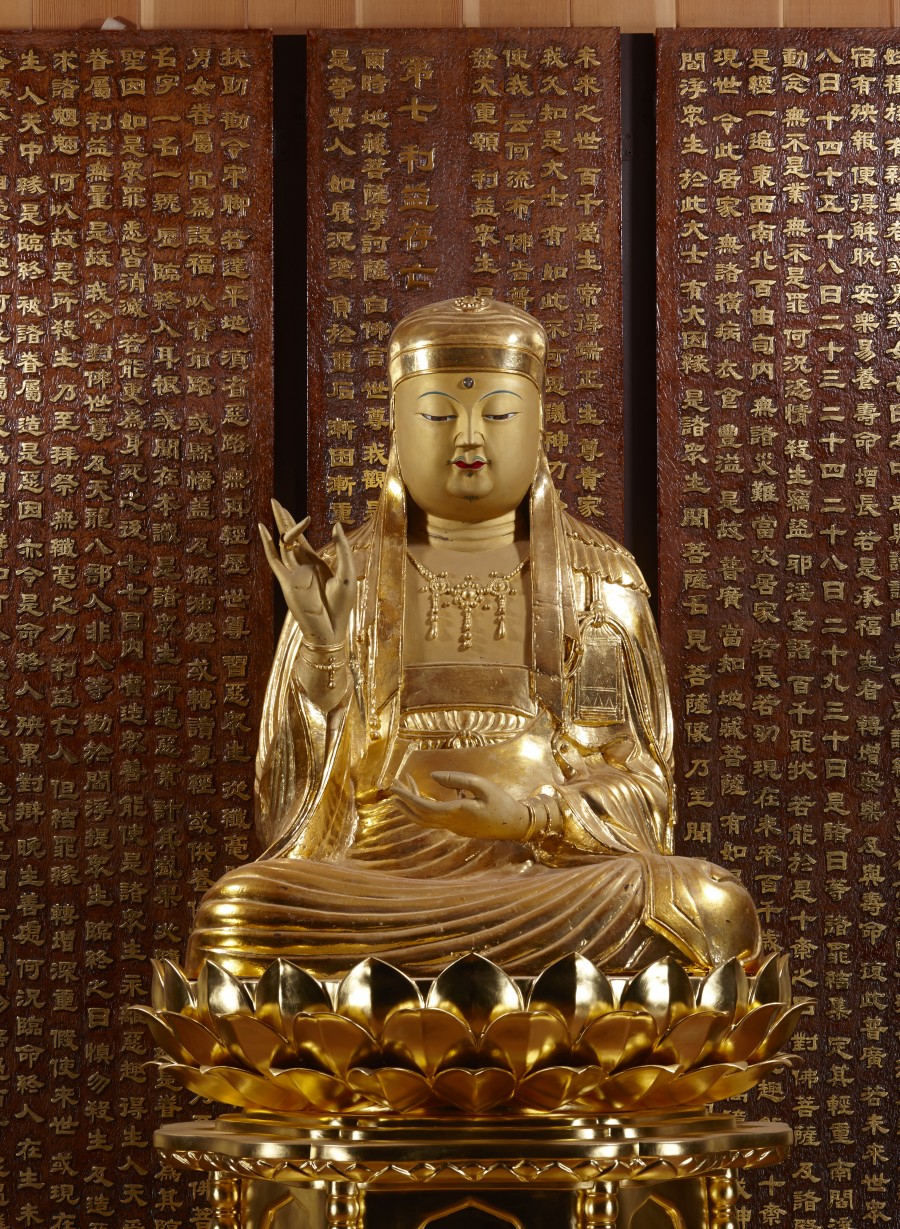English | Statue of Ksitigarbha Bodhisattva
Page information
Author Jogye On25-05-02 16:28 Views87 Comments0Related links
Body

Statue of Ksitigarbha Bodhisattva
(Gilt-bronze Seated Ksitigarbha Bodhisattva at Dosoram Hermitage of Seonunsa Temple, Gochang, National Treasure No. 280, Goryeo Period)
Kstigarbha Bodhisattva is best known for its vow to defer Buddhahood until all sentient beings anguishing in the hell realm are liberated. In artistic representation, he is often shown in a triad with him sitting at the center, flanked by Mudogguiwang, a ghost king named “No Poison,” and Daoming (道明), a Buddhist monk from the Tang Dynasty. The hall dedicated to his worship is called Kstigarbha Hall. However, when the ten kings of the underworld, whose role is to judge the souls of the deceased, are enshrined together, it is referred to as the Yama Hall or the Ten Kings’ Hall.
The iconography of Kstigarbha Bodhisattva is characterized by a shaved head of a Buddhist monk, and he is often depicted without an ornate crown, sometimes wearing a hood instead. In his hands, he typically holds a khakkhara staff and a wish-fulfilling orb, as described in Kstigarbha Bodhisattva liturgical texts.
There are many stories about the origin of the khakkhara, a staff topped with metal rings. Traditionally, it was said to be used by Buddhist monks to ward off poisonous insects when traveling on the road, or to prevent accidental harm to small creatures they might tread on with the rattling of the metal rings. Another theory is that the jingling of the metal rings acted as a doorbell when monks went out to collect alms, to announce their presence outside the villagers’ houses. In some traditions, the khakkhara is also associated with the act of opening the gates of hell using the metal ring as a hook.


